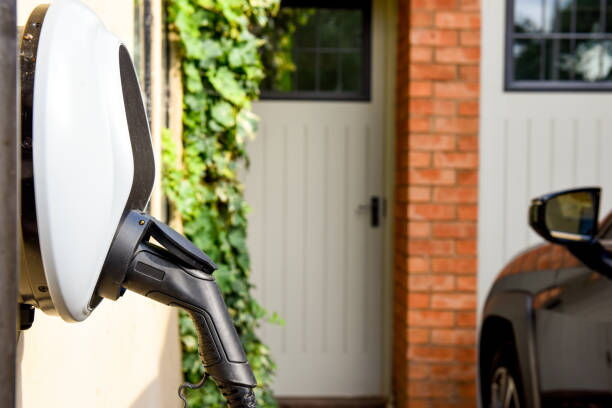While indoor installations are straightforward, they do require adequate space. If parking indoors isn’t an option, chargers can still be mounted indoors with cords routed outside for convenient access.

Although more labor-intensive, outdoor installations enable greater accessibility, especially in residential or commercial spaces where parking is located outside.
| Feature | Indoor Chargers | Outdoor Chargers |
| Installation Cost | Generally lower; fewer infrastructure needs | Higher; may involve trenching or pedestal mounting |
| Weather Protection | Fully protected from environmental factors | Weatherproof design but exposed to the elements |
| Longevity | Extended lifespan due to sheltered environment | Durable but may require more maintenance |
| Convenience | Proximity depends on indoor parking availability | Installed close to outdoor parking for ease |
| Versatility | Limited to spaces with indoor access | Suitable for a wide range of locations |
If you're considering installing an outdoor charging station near your home, it's natural to feel some apprehension about potential risks to your vehicle or safety. However, outdoor EV charging is designed to be secure and reliable when proper precautions are taken.
Outdoor EV chargers offer convenience and accessibility, but it's important to handle them safely. Here are a few key tips:
Don’t park your EV near large metal objects, such as fences or garbage cans. These objects can act as conduits for stray electrical currents if a fault occurs.
Regularly check the charger and its cables for wear, cracks, or other damage that might expose electrical components.
Modern outdoor EV chargers are built to withstand harsh conditions, including rain, snow, and extreme temperatures. These chargers typically feature high ingress protection (IP) ratings, ensuring resistance to water and dust.
However, the station’s inlet pipes and connectors can still be susceptible to physical impacts or surges. To mitigate these risks, choose a charger made from durable materials that has undergone rigorous testing for impact and fire resistance.
Regulations for outdoor EV charger installations vary across cities, states, and countries. Always consult local authorities and secure the necessary permits before proceeding with installation.
Some municipalities require a permit process for residential or commercial EV charger installations. Ensure all approvals are in place before starting the project.
Regulations may change, so it’s a good idea to periodically review local laws to remain compliant.
Outdoor EV charging is safe and reliable when appropriate measures are taken. By following safety tips, choosing high-quality chargers with proper ingress protection, and adhering to local regulations, you can enjoy the convenience of charging your vehicle outside with peace of mind.
The choice between indoor and outdoor EV chargers depends on your priorities, budget, and location. Here's what you should consider:
Indoor chargers, particularly in a garage, offer convenience and protection. These chargers are shielded from weather conditions, reducing wear and extending their lifespan. However, they are generally more expensive to purchase and install. For a Level 2 charger—the most common option—you’ll need a dedicated 240V circuit, which requires professional electrical work and can cost several thousand dollars.
Outdoor chargers are often more affordable and easier to install, with many models designed for do-it-yourself setups. However, exposure to rain, snow, and other elements can lead to rust and wear over time. If you live in a region with mild, temperate weather or don’t mind periodic maintenance, an outdoor charger could be a cost-effective solution.
If budget isn't a concern or you prioritize durability and reliability, an indoor charger is a solid choice. For those in areas with favorable weather or looking for a budget-friendly option, an outdoor charger might be the better fit
Choosing between indoor and outdoor EV chargers ultimately depends on your specific needs, space constraints, and budget. Indoor chargers offer enhanced protection and cost efficiency, while outdoor chargers provide greater flexibility and accessibility.For a seamless installation, consult with a professional EV charger installer to assess your location, ensure compliance with local regulations, and choose the best solution. By selecting the right charging setup, you’ll enjoy the convenience of EV ownership while supporting a more sustainable future.